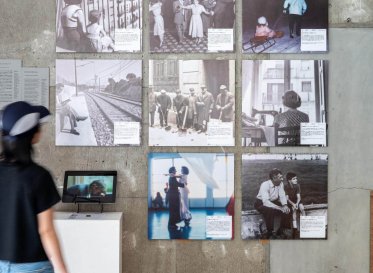
Ten books for step by step design learning

Hello, it is the prime mouth of public relations. On the other day, I interviewed Project member Mr. Kanno on ” Basic Survey on Aging ” implemented as commissioned project by the Ministry of Economy, Trade and Industry.
What kind of investigation did you do? What kind of things did you find? When I listen to the process or learning to look at the subjects (living people), culture and the environment in design research, the more I listen, the stronger the observation eyes and the power of rich interpretation hold the key.
In design research, in order to thoroughly understand the lives of the surveyed persons, we gather all kinds of information related to the theme, interview and observe. It is not easy to acquire the power of flexibility and interpretation to switch the viewpoint to understand the situation instantaneously or to sense a sense of incompatibility, and to understand multifacetedly, against a living human being. Better yet, I can not make a tip.
Therefore, as a spin-off of the interview, I asked Kanno to pick up a reference book. Those who do not notice, but who want to train observational and interpretive abilities to create products, services, institutions and mechanism many people were looking for are essential!
First of all is attitude and case study. Design Research Elementary level
Try changing everyday viewpoint

” Earth Family ” (Material World Project, 1994, TOTO Publishing)
A photograph collection which collected photographs taken at the house in front of the house and collected for 30 countries. Families with only furniture and home appliances, families with many rides, families with only minimal items. The natural scenery of “people’s living” also appears as a completely different thing from the ones reflected in them, “Why are there so many things?” And “What is this used for?” As background . Please feel the sense when “I saw something I could not see”.
Feed perspective in the field

” Behavior without thought? “(Jane Fulton · Souli / IDEO, 2009, Ota publication)
He was so hot as to hide a T – shirt, or put a foot on the fence at a time when connecting a shoelace. The act we do unconsciously is based on instincts, customs and experience. What does it mean to divert functions unconsciously, such as making T-shirts instead of fans, fences as footstoppers? We introduce actions that may be “unthinkable” around the world with captions and pictures of unique perspectives.

” Silent needs ” (Jan Chip Chase, 2014, published by Eiji)
Design research will carefully observe the lives of the surveyed persons. In some cases, even in wallets and refrigerators. To find and analyze trivial things that people think is natural. By following the “why?” Experiences of Yan Chip Chase himself as an expert in design research, the view that the reader will see on a daily basis may change slightly.
Familiarize your method with your body

” This is Searvise Design Thinking ” (Mark Stick Dawn, Jacob Schneider, 2013, BNN Co., Ltd. )
” Research Design, New and 100 Laws ” (Bella Martin, Bruce · Hannington, 2013, BNN Co., Ltd.)
Function · After the era in which value is placed in circulation, now is the time when choices are made according to the values of users themselves. However, it is not necessary to simply create products that listen to the needs and respond to it, but it is also important for themselves to notice unnatural demand through ethnography research and others. Methods for encouraging that “awareness” are divided into detailed phases and explained with examples. It is recommended to leave it at hand as a dictionary.
To you who want to understand more systematically. Application as "Learning"
Live in the field

” Fieldwork Techniques – Fostering Questions, Producing a Hypothesis ” (Ikuya Sato, 2002, Shinya)
A practical guide to introduce the elements and techniques of field work for those who conduct onsite investigations while learning sociology, psychology, business science, etc., journalists and others who conduct on-site interviews and surveys. While acting to be familiar with the target at the site, how can the head as an observer work? How do you write the situation you are seeing as facts without prejudice or unexpected? I carefully explain from preparation to leaving record. It is painted with narrative expressions such as reckless travelers and contemporary theater, and can also be enjoyed as reading material.
Deep in the genealogy of design

” Design for surviving ” (Victor · Papeneck, 1974, Akira Shoten)
“Design is a tool that meets the real demands of human beings.” After the war when the “non-persistent” eye-catching design was circulated, I appealed to the designer’s social responsibility while teaching at the design school. This book, written with expectation that “a new way of thinking about the process of design” to be born, is exactly one book to carefully follow and understand the background of design research.

” Inclusive design ” (Julia · Kasem et al., 2014, scholarly publishing company)
In mass production (mass production) taking an average size, weight and shape, there are people who are “eliminated” by any means such as disabled people and children by all means. Now that the technology of digital fabrication has developed, designs including people who have been regarded as minorities have become possible. If the users themselves can participate in the design process, how can they engage in themselves? A book filled with ideas and perspectives of “practice” to incorporate individual specific issues of consumers into design.
I want to read the power of the shoulder, extra edition

” Wooden skiing ” (Bruno Munari, 1985, Sudoku)
It is a picture book in which the way the tree is written is certainly the street according to the title calling for trees, opening the actual page. However, through this act, “a viewpoint to observe” is one of the nurturing books. You can experience experiences that you can see unknown world through observation.

” Mono is born from things ” (Bruno Munari, 2007, Misuzu Shobo)
One book that presented a methodology of “planning and design” by Munari who performs various designs such as products, graphics, images and sculptures. By disassembling ingredients such as cooking, furniture, toys and architecture, and verifying what the “movement and design” is functioning through, the question of the author’s “social role of design” and Expectations will come through.
Next Contents












